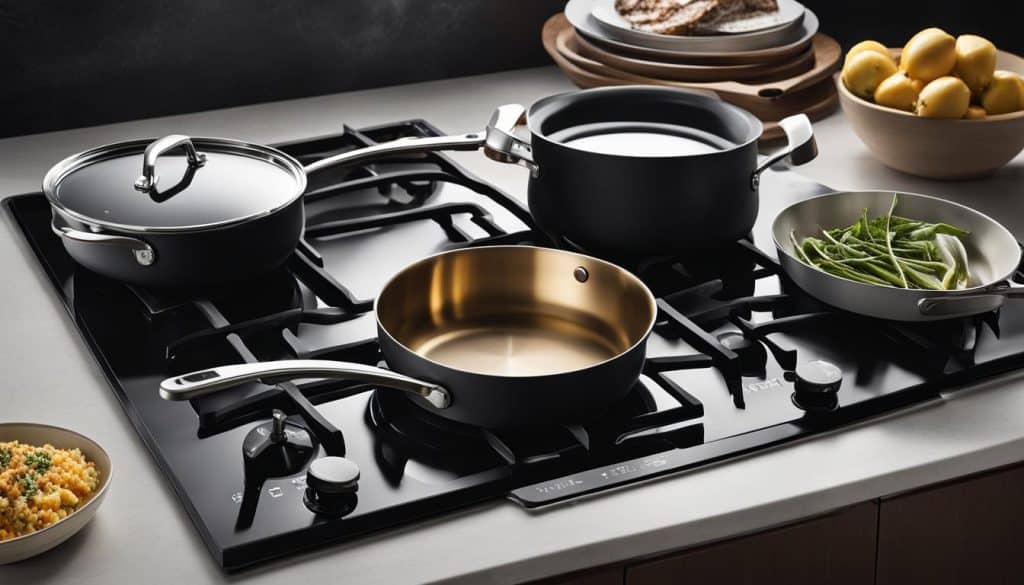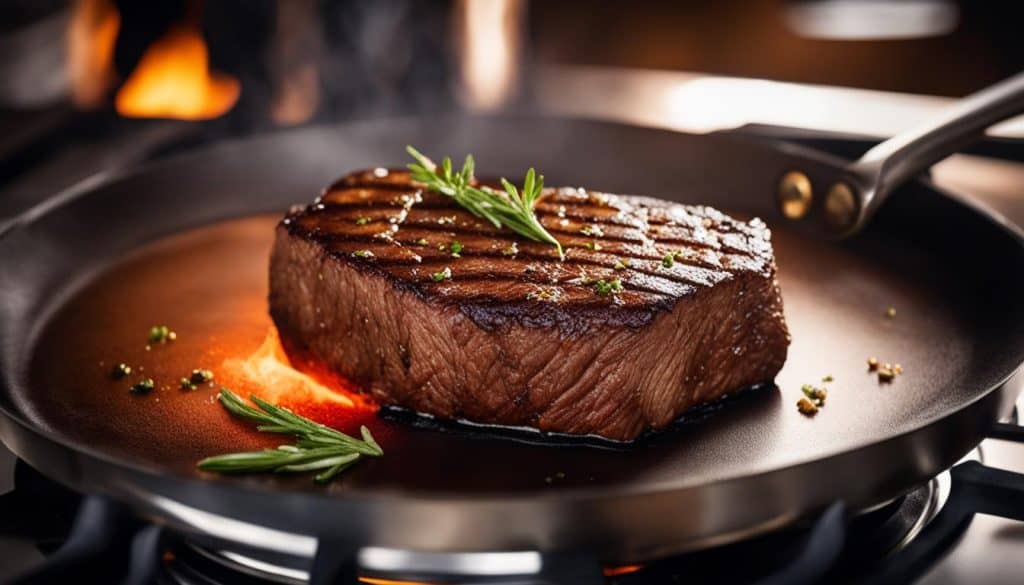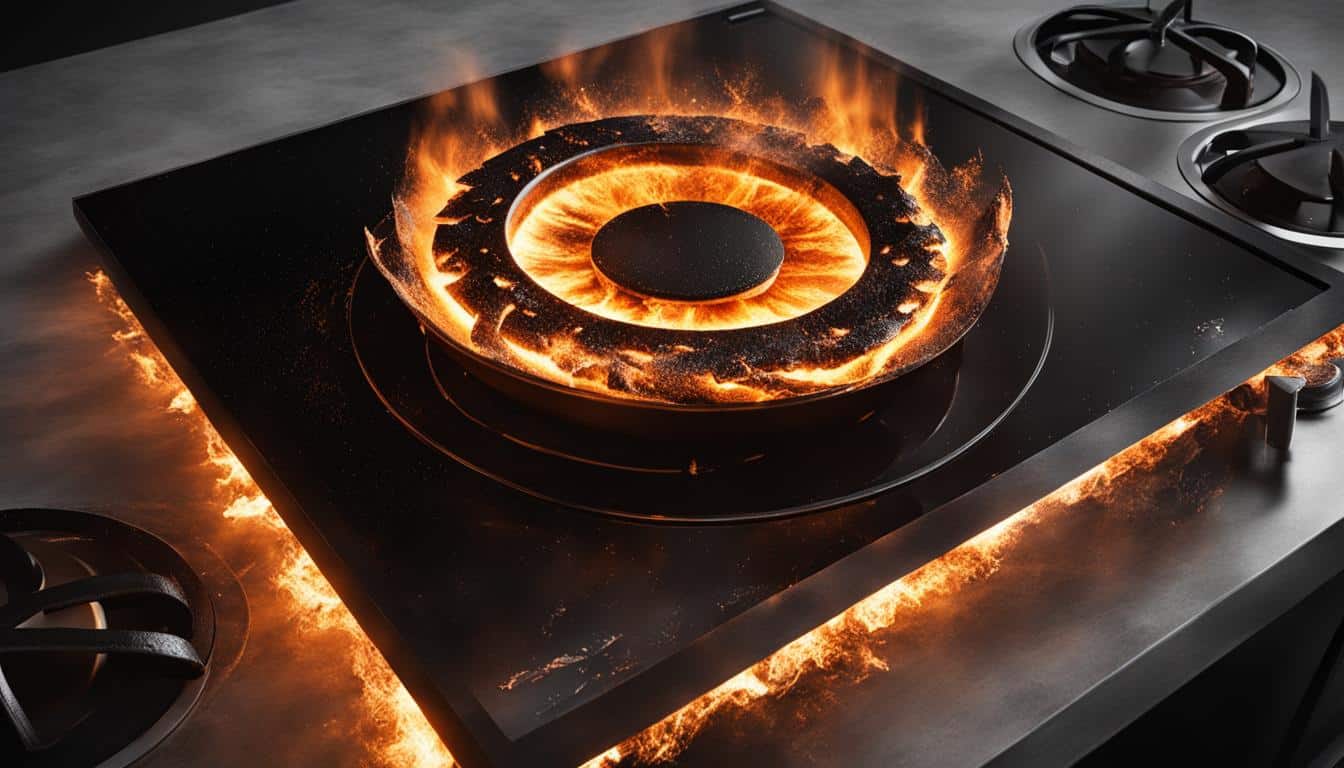Are you considering a ceramic cooktop but have heard some negative things about them? Don’t make a decision based on myths! In this article, we will debunk common myths surrounding ceramic cooktops.
Discover the truth behind these misconceptions to make an informed decision about using ceramic cooktops in your kitchen.
There are a lot of myths about ceramic cooktops out there. Some people believe that they are fragile and easily scratched, while others think they are not energy-efficient or require special cookware. But what is the truth behind these myths? Let’s take a closer look.
Myth 1: Ceramic Cooktops are Fragile and Easily Scratched
Are you hesitant to buy a ceramic cooktop because of rumors it is fragile and easily scratched? While it’s undeniable that ceramic cooktops require a bit of TLC, with proper care, they can be quite scratch-resistant.
One critical factor in preventing scratches is to use cookware with smooth bottoms. Rough or warped cookware can scratch the cooktop’s surface. Additionally, avoid using abrasive cleaners or cleaning pads. Instead, clean with a soft cloth and non-abrasive cleaner.
Regular maintenance is also crucial in preventing scratches. Clean spills immediately to avoid them becoming burnt-on stains that require harsher scrubbing.
Overall, ceramic cooktops can be quite scratch-resistant with proper care and suitable cookware.
Scratch Resistance Test
If you’re still unsure, take a look at this scratch resistance test between a ceramic cooktop and a cast iron pan.
| Cooktop Type | Cookware Type | Scratch Result |
|---|---|---|
| Ceramic | Cast Iron Pan | No scratches |
| Ceramic | Rough Pot | Scratches |
| Ceramic | Stainless Steel Pot | No scratches |
Myth 2: Ceramic Cooktops Take a Long Time to Heat Up and Cool Down
One of the biggest misconceptions about ceramic cooktops is that they take a long time to heat up and cool down. While they may not heat up as quickly as induction cooktops, ceramic cooktops actually heat up faster than electric coil cooktops.
This is because they use radiant heat that is transferred directly to the cookware, rather than heating up a coil that then heats up the cookware.
Additionally, ceramic cooktops cool down relatively quickly once you turn them off. This means that they are energy-efficient, as they don’t waste energy by continuing to heat up even after you’re done cooking.
If you’re in a hurry to start cooking, look for ceramic cooktops that come with a power boost feature. This extra burst of heat will help your cookware heat up even faster.

Not only are ceramic cooktops energy-efficient, but they are also easy to control. With precise temperature settings and a smooth surface, cooking on a ceramic cooktop is a breeze. So, don’t let the myth of slow heating and cooling times deter you from using a ceramic cooktop in your kitchen.
Myth 3: Ceramic Cooktops are Difficult to Clean
Don’t let the fear of difficult cleaning deter you from choosing a ceramic cooktop. The smooth surface of ceramic cooktops actually makes them incredibly easy to clean. Spills and splatters wipe away quickly with a damp cloth or sponge, without the need for harsh scrubbing.
However, it is important to clean up spills promptly to prevent them from drying and becoming more difficult to remove. Using a ceramic cooktop cleaner can also help to keep your cooktop looking shiny and new. Just be sure to follow the instructions carefully to avoid damaging the surface.
Pro Tip: Avoid using abrasive cleaners or scrubbers on your ceramic cooktop, as they can scratch the surface and make cleaning even more difficult.
Myth 4: Ceramic Cooktops Require Special Cookware
One common misconception about ceramic cooktops is that they require special cookware. While it’s true that not all cookware is compatible with ceramic cooktops, most types of cookware can be used, as long as they have a flat bottom.
Materials like stainless steel, enameled cast iron, and aluminum-clad cookware work well with ceramic cooktops. However, you should avoid using cookware made of glass, ceramic, or stone, as they can scratch the surface of the cooktop.
It’s important to note that using the right cookware is not just about preventing scratches. Using cookware with a flat bottom also ensures that the cookware makes full contact with the cooktop, allowing for even heat distribution and efficient cooking.
While there are some special considerations when it comes to choosing compatible cookware for ceramic cooktops, you don’t have to break the bank to equip your kitchen. With a little research, you can find affordable and suitable cookware for your cooking needs.
Ceramic cooktops do not require special cookware. Most types of cookware can be used, as long as they have flat bottoms and are compatible with the cooktop. By choosing the right cookware, you can avoid damaging the cooktop and ensure efficient and even cooking.
Myth 5: Ceramic Cooktops Require Special Cookware
It is a common misconception that ceramic cooktops require special cookware. While it’s true that some materials, such as copper or glass, may not be ideal for use with ceramic cooktops, most cookware with a flat bottom works well.
Ceramic cooktops heat t ough an electromagnetic field, creating a magnetic circuit with compatible cookware. The cookware’s ferromagnetic material allows for efficient heat transfer to the food.
Compatible cookware includes stainless steel, enameled cast iron, and aluminum-clad cookware. These materials are widely used and readily available, making it easy to find cookware that works on ceramic cooktops.
| Cookware Type | Compatible with Ceramic Cooktops? |
|---|---|
| Stainless Steel | Yes |
| Enameled Cast Iron | Yes |
| Aluminum-Clad | Yes |
| Copper | No |
| Glass | No |
It’s important to note that using cookware with warped or damaged bottoms can scratch the ceramic surface. Always ensure your cookware has a smooth bottom to prevent scratches.
With the right cookware, you can enjoy cooking on your ceramic cooktop without any issues.

Myth 6: Ceramic Cooktops are Not Suitable for High-Heat Cooking
If you enjoy searing meats or stir-frying veggies, you may have heard the myth that ceramic cooktops are not suitable for high-heat cooking. However, this couldn’t be further from the truth. Ceramic cooktops offer high-heat capabilities and can reach temperatures sufficient for searing and other high-heat cooking techniques.
If you need an extra boost of heat, many ceramic cooktops come equipped with a power boost feature. This can give you the high heat you need to sear a steak or bring water to a boil quickly.

It’s important to note that some ceramic cooktop models may have a lower heat capacity than others, so be sure to check the manufacturer’s specifications before purchasing. Also, keep in mind that high-heat cooking can sometimes cause discoloration or staining on the cooktop surface, but this is purely cosmetic and does not affect its performance.
Myth 7: Ceramic Cooktops Have Uneven Heat Distribution
Do you worry about getting hot spots on your food because of uneven heat distribution on your cooktop? Many people believe that ceramic cooktops have uneven heat distribution, but this is not entirely true.
Modern ceramic cooktops are designed with advances in technology that offer good heat distribution. With a coil design and smooth surface, the heat is distributed evenly, ensuring your food cooks evenly, and reducing the hot spots that some believe are prevalent on ceramic cooktops.
To further minimize uneven heating, manufacturers have also integrated features like multiple-ring burners and consistent heating across the entire surface area of the cooktop, making sure your food is cooked evenly and to perfection.
Don’t believe the myth that ceramic cooktops have uneven heat distribution. They are designed to ensure your food cooks evenly, resulting in fewer burnt or undercooked spots.

Myth 8: Ceramic Cooktops Are More Expensive than Other Options
Don’t believe the myth that ceramic cooktops are more expensive than other types of cooktops. In fact, ceramic cooktops are generally more affordable than induction cooktops and about the same price as gas cooktops. The price range of ceramic cooktops varies depending on the brand, size, and features, but you can usually find one to fit your budget.
| Cooktop Type | Average Price Range |
|---|---|
| Ceramic Cooktops | $500-$1,500 |
| Induction Cooktops | $1,000-$3,000 |
| Gas Cooktops | $500-$2,000 |
When considering the price of a ceramic cooktop, it’s important to keep in mind the long-term savings. Ceramic cooktops are energy-efficient, which means you’ll save money on your energy bill in the long run. They also have a long lifespan when properly cared for, so you won’t have to replace them as frequently as other types of cooktops.
In summary, don’t let the myth that ceramic cooktops are expensive deter you from considering them as an option for your kitchen. With a wide range of prices and long-term cost savings, ceramic cooktops are an affordable choice that can bring a modern and sleek look to your kitchen.
Myth 9: Ceramic Cooktops Are Outdated and Not as Popular as Other Options
Don’t be fooled by the misconception that ceramic cooktops are outdated and unpopular. While they may not be the newest technology on the market, they offer many advantages that still make them a popular choice for homeowners.
Not only are ceramic cooktops easy to clean and affordably priced, but they also offer sleek designs that fit seamlessly into modern kitchens. And contrary to what some may believe, ceramic cooktops are also energy-efficient.
Unlike traditional electric coil cooktops, ceramic cooktops transfer heat directly to the cookware, minimizing energy waste. While they may not be as efficient as induction cooktops, they are certainly more energy-efficient than their coil counterparts.
In fact, studies have shown that ceramic cooktops can reduce energy consumption by up to 30%, making them an eco-friendly choice for your kitchen. So don’t let the myth that ceramic cooktops are outdated and inefficient hold you back from enjoying their many benefits.
Myth 10: Ceramic Cooktops Are Outdated and Not as Popular as Other Options
Don’t let anyone tell you that ceramic cooktops are outdated and unpopular. They remain a popular choice for many households for several reasons.
Sleek Design
Ceramic cooktops are known for their sleek, modern appearance that can complement any style of the kitchen. They are available in various colors and layouts, adding to their aesthetic appeal.
Ease of Cleaning
One of the biggest advantages of ceramic cooktops is their smooth surfaces, making cleaning a breeze. Spills can be wiped away quickly with minimal effort, saving you time and energy.
Affordability
Compared to other cooktop options, ceramic cooktops fall in the middle price range, making them a more affordable option for many households. They offer good value for money without compromising on quality or features.
Popular Choice
Despite what some may say, Ceramic cooktops remain a popular choice for many households. Their sleek design, ease of cleaning, and affordability make them a viable option for anyone looking to upgrade their kitchen appliances.
So don’t believe the myth that ceramic cooktops are outdated and unpopular. They remain a popular and practical choice for many households, and with their sleek design, ease of cleaning, and affordability, it’s not hard to see why.


